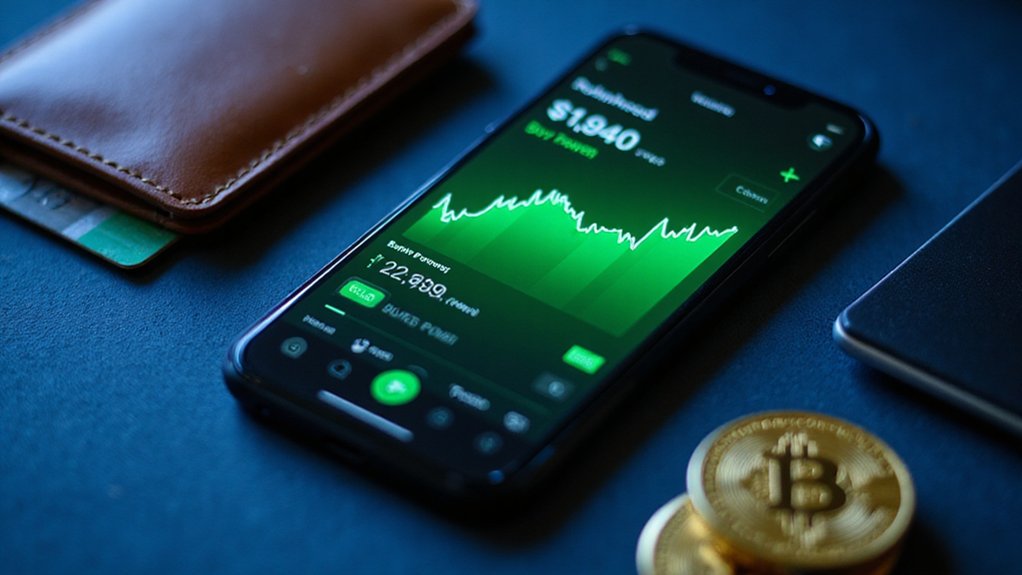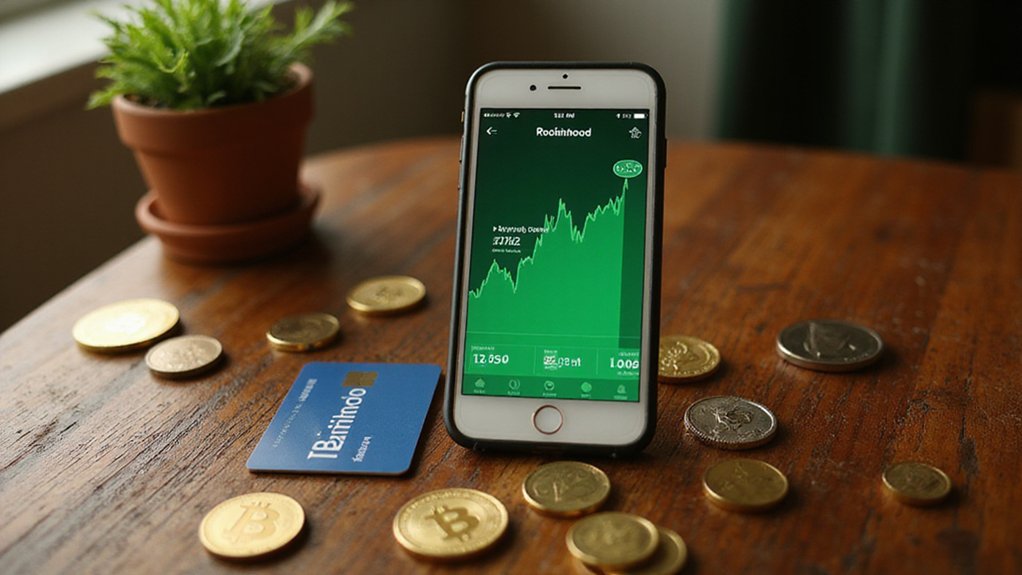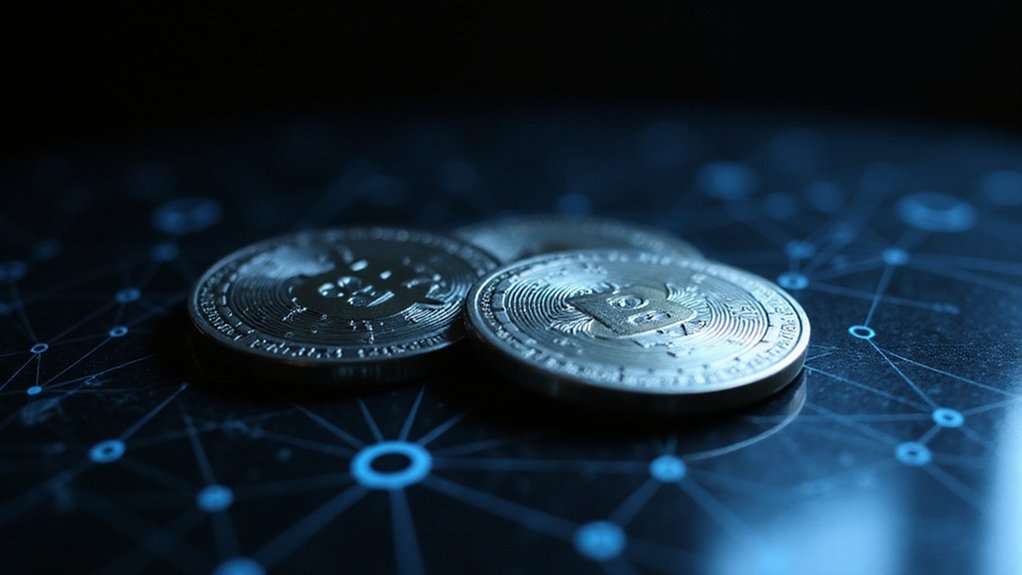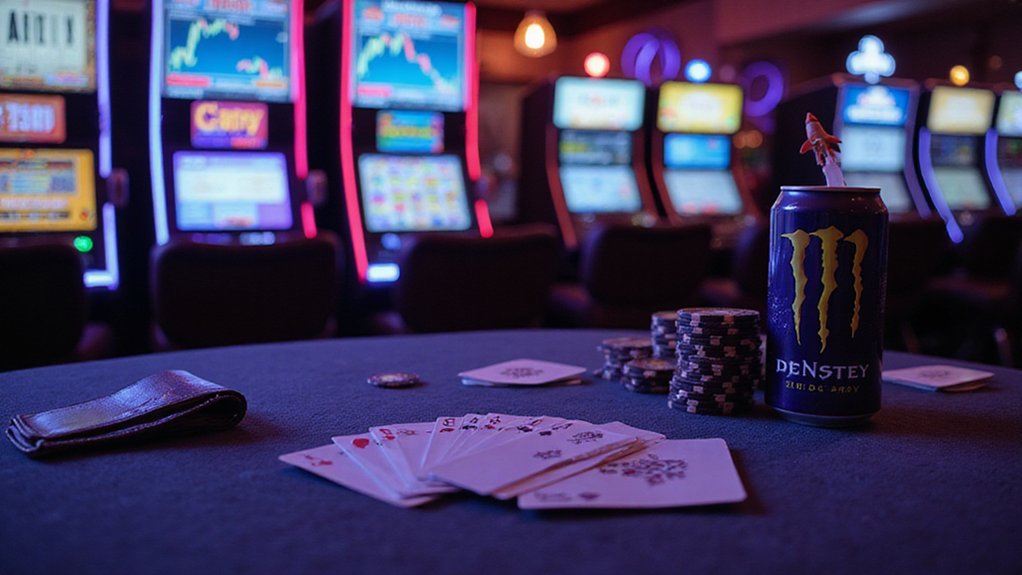Buying power on Robinhood represents the total funds available for purchasing securities—simple math for cash accounts, but decidedly more complex with margin accounts. Robinhood Gold subscribers (who part with $5 monthly) can access up to 2× leverage, subject to the $2,000 minimum deposit required by regulations. Settlement periods create that peculiar limbo where sold securities’ proceeds remain tantalizingly visible yet untouchable. Proper management prevents the dreaded margin call—that unwelcome harbinger of forced liquidations.

The elusive concept of “buying power” stands as both the cornerstone and potential stumbling block of any trader’s journey on the Robinhood platform.
In its simplest form, buying power represents the total funds available for purchasing securities—be they stocks, options, or cryptocurrencies—within one’s account.
Yet beneath this seemingly straightforward definition lies a complex interplay of cash balances, margin capabilities, settlement periods, and regulatory constraints that can befuddle even seasoned market participants.
The financial labyrinth of trading extends far beyond mere numbers—it’s an intricate dance of timing, regulation, and strategic foresight.
For cash account holders, the equation remains delightfully uncomplicated: buying power equals available cash, full stop.
However, venture into the domain of margin accounts (particularly Robinhood Gold subscribers), and the waters grow murkier.
These privileged traders may borrow up to 50% of their securities’ value—a financial leverage that simultaneously amplifies both potential returns and inherent risks.
This accessibility aligns with Robinhood’s mission to eliminate traditional commissions while making trading available to investors of all experience levels.
(The market, after all, has a peculiar habit of punishing overconfidence with swift and merciless precision.)
Settlement periods—that curious financial purgatory where funds exist but remain tantalizingly untouchable—further complicate the buying power calculus.
Recent sales generate proceeds that hover in limbo for days, excluded from one’s buying power until the regulatory settlement clock expires.
This temporal constraint often catches novice traders unaware, leaving them perplexed by the discrepancy between account value and executable trading capacity.
The consequences of mismanaging this crucial metric can prove particularly unpleasant.
Exceed buying power limits and one might face the dreaded margin call—that financial ultimatum demanding additional funds or forced liquidation.
Meanwhile, interest charges accrue on borrowed margin, silently eroding potential profits with the relentless efficiency of compound mathematics.
Robinhood’s user interface does attempt to demystify this concept, displaying available buying power prominently within the dashboard and generating alerts when proposed trades would breach established limits.
Yet true mastery requires more than passive observation.
The savvy trader actively monitors this figure, strategically managing deposits, margin utilization, and settlement timing to maximize trading opportunities while minimizing potential pitfalls—a delicate balancing act indeed.
It’s worth noting that Robinhood Gold requires a $2,000 minimum deposit and comes with a $5 monthly fee for those seeking to leverage margin capabilities.
Frequently Asked Questions
Does Robinhood Charge Interest on Margin Used for Buying Power?
Yes, Robinhood charges interest on margin used for buying power.
Non-Gold subscribers pay interest on all borrowed amounts immediately, while Gold subscribers receive $1,000 interest-free before rates apply.
Interest accrues daily—calculated as margin balance × (annual rate ÷ 360)—and is charged monthly to the investing balance.
Rates start at 5.75% for balances up to $50,000, decreasing as borrowing increases.
The interest structure (which remains discretionarily adjustable) inevitably impacts overall investment returns.
Can Buying Power Be Transferred Between Robinhood Accounts?
Transferring buying power between Robinhood accounts follows strict pathways.
While instant transfers up to $500,000 daily are permitted between Spending, Individual Investing, and Joint Investing accounts, regulatory barriers silo crypto (Robinhood Crypto) and futures (Robinhood Derivatives) holdings.
Margin accounts offer immediate trading access despite unsettled funds, though withdrawal flexibility remains constrained by settlement periods.
The transfer interface (Account → Transfers) facilitates these movements, though account-specific restrictions and verification protocols invariably apply.
How Quickly Does Buying Power Refresh After Selling Stocks?
Buying power refreshes variably based on account type.
For margin accounts, unsettled funds from stock sales are available immediately for new purchases—a somewhat miraculous financial sleight-of-hand that belies the actual T+2 settlement period.
Cash accounts, however, must endure the full one-trading-day wait for buying power to regenerate after sales.
Market holidays and weekends predictably extend this timeline, and transfers between separate Robinhood entities (like Derivatives to Financial) may introduce additional delays before funds become deployable.
Does Options Trading Affect Buying Power Differently Than Stocks?
Options trading indeed impacts buying power differently than stocks.
While stocks typically reduce buying power by the purchase amount, options involve complex margin requirements—particularly when selling puts or calls, where collateral must cover potential obligations.
This leverage means a trader can control more assets with less capital (a blessing and curse, naturally).
Settlement periods remain similar, but the risk-adjusted capital requirements for options positions can dramatically alter available buying power compared to straightforward equity transactions.
Can I Increase My Buying Power Without Depositing More Funds?
Increasing buying power without adding funds is indeed possible through several mechanisms.
Investors can utilize margin accounts (essentially borrowing against existing assets), sell existing securities, wait for cash to settle from previous transactions, or upgrade to premium services like Robinhood Gold.
Options strategies—particularly spreads that reduce capital requirements—present another avenue.
Of course, each approach introduces its own risk profile; margin particularly comes with the delightful possibility of losing more than one’s initial investment.









